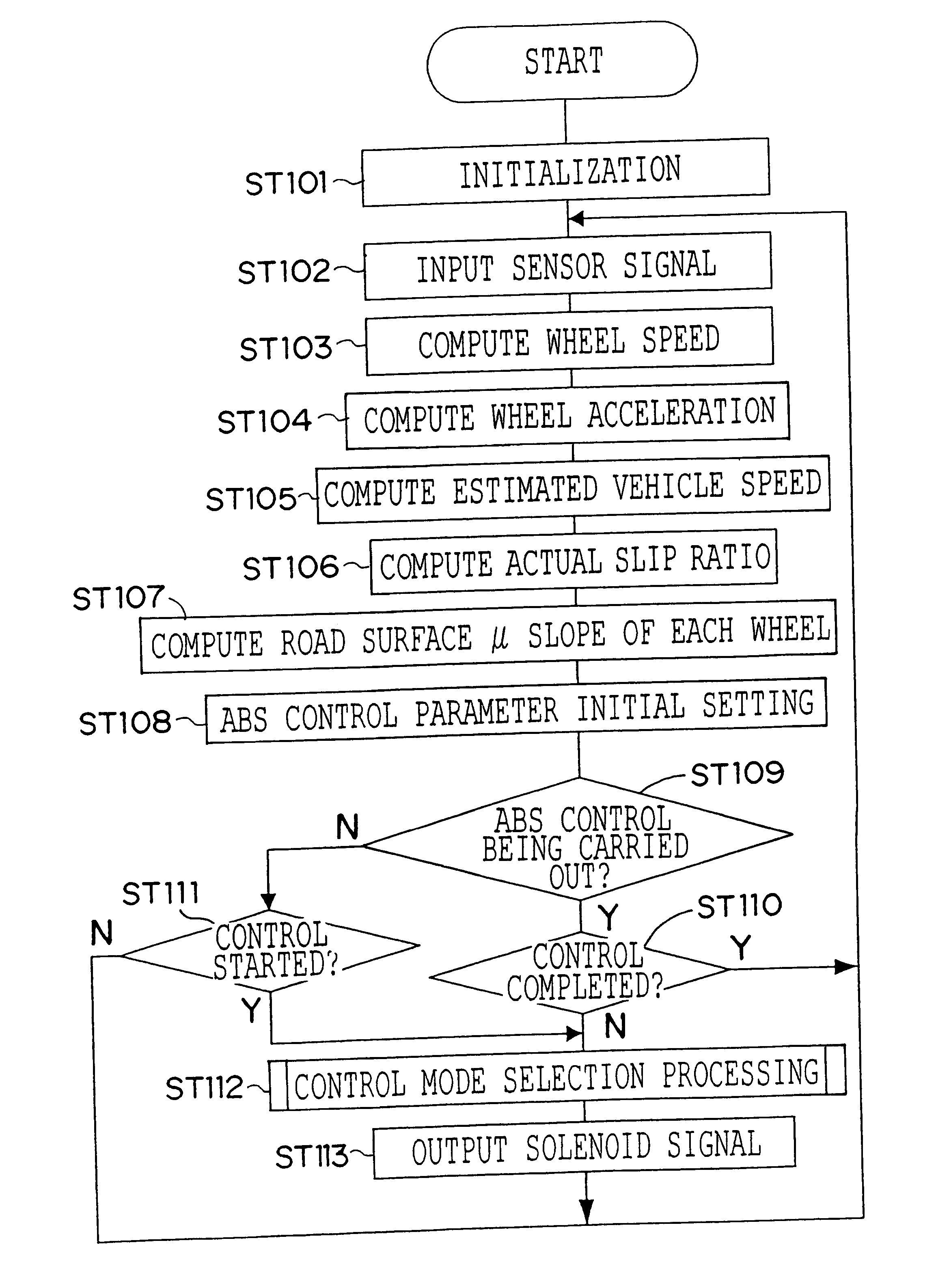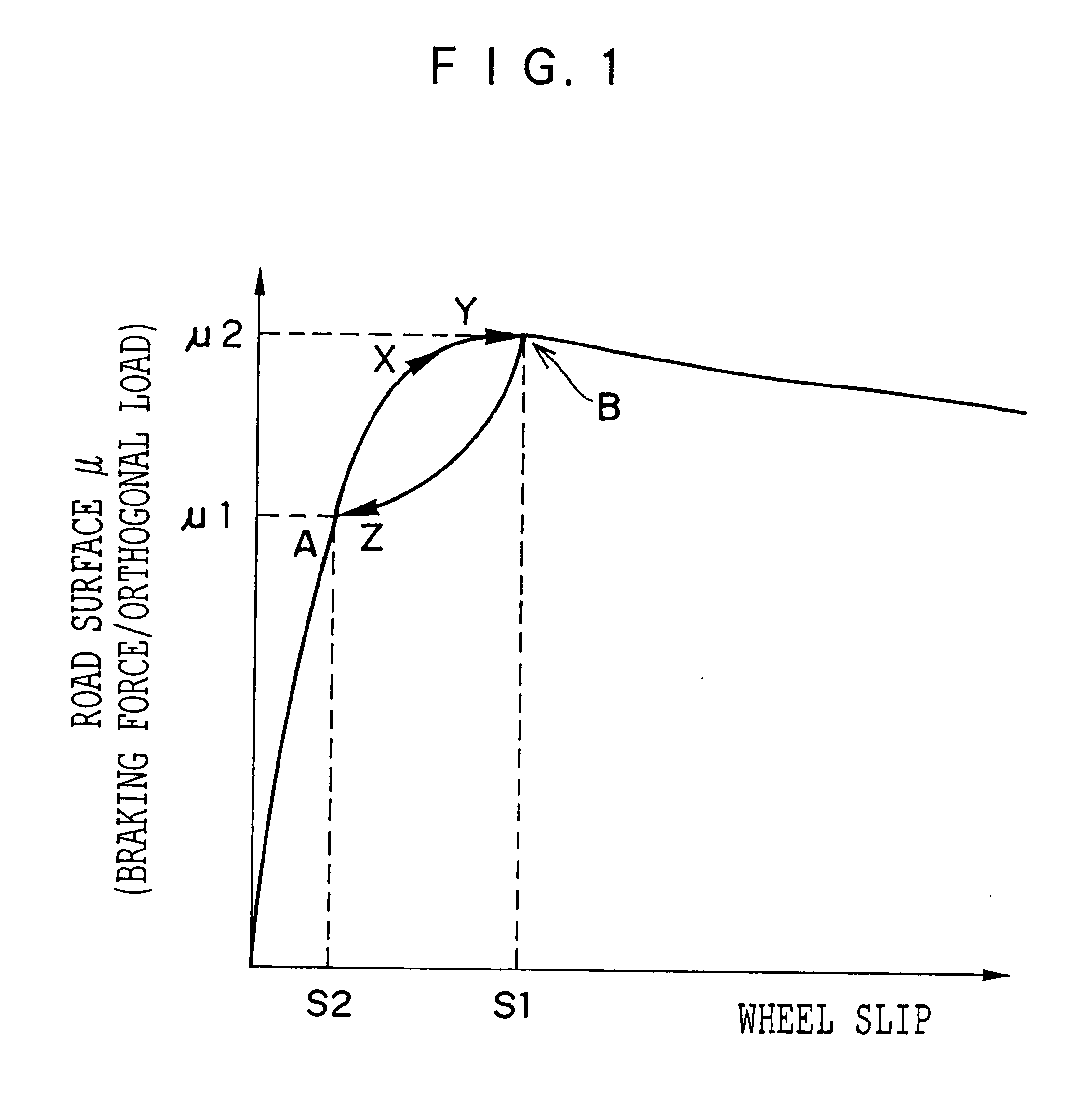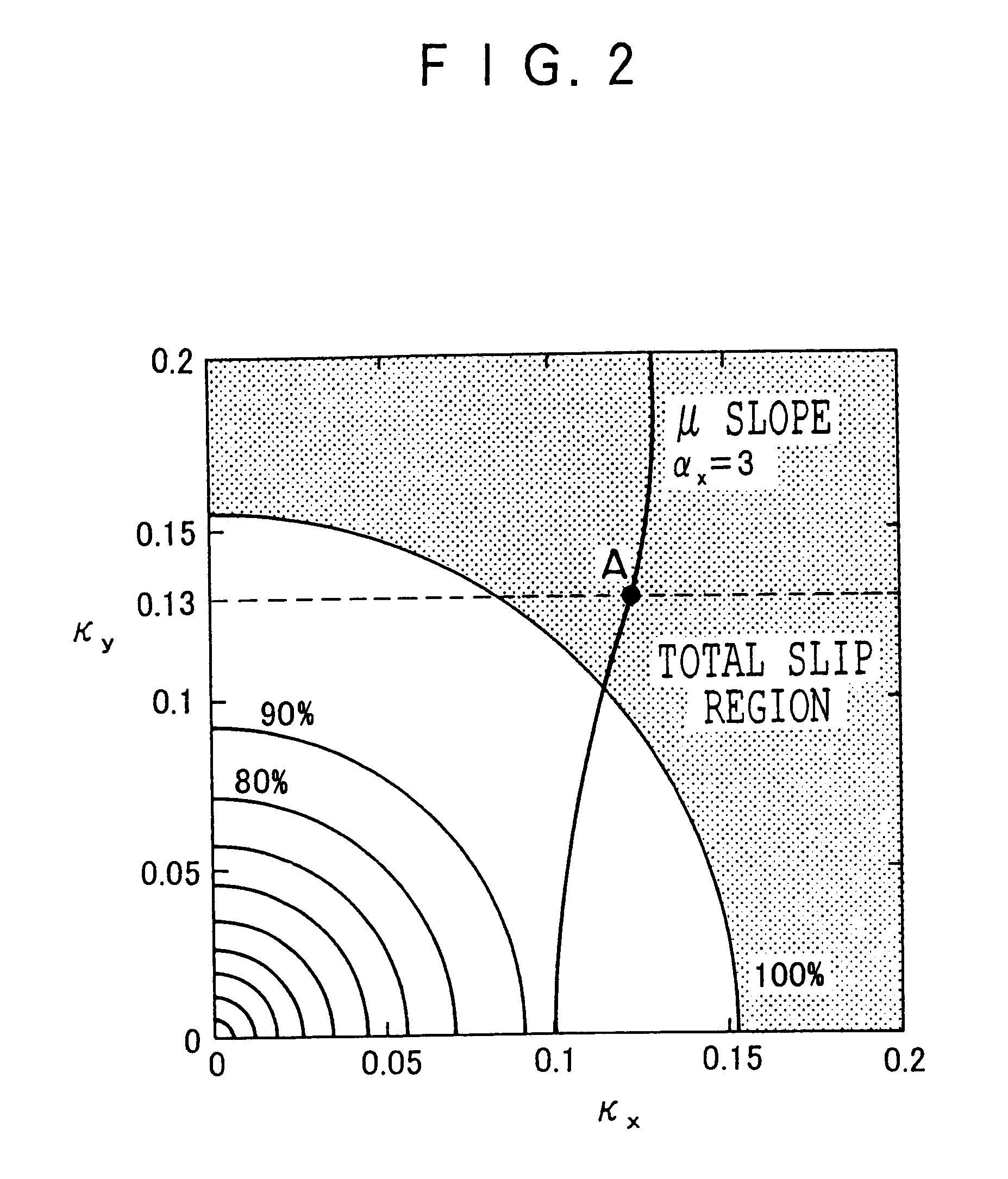Braking force control device
a technology of braking force and control device, which is applied in the direction of braking system, process and machine control, instruments, etc., can solve the problems of inability to accurately calculate difficulty in accurately calculating vehicle acceleration or wheel acceleration, and inability to accurately know the frictional force characteristic of tire road surface, etc., to achieve the effect of improving control stability
- Summary
- Abstract
- Description
- Claims
- Application Information
AI Technical Summary
Benefits of technology
Problems solved by technology
Method used
Image
Examples
first embodiment
(First Embodiment)
The present invention can be applied to, for example, an ABS control device 1 having the structure illustrated in FIG. 4. The ABS control device 1 includes wheel speed sensors 10 (10FL, 10FR, 10RL, 10RR) which detect the wheel speeds of the respective wheels; a stop switch 11 which detects that the brake pedal has been depressed; an electronic control unit (hereinafter, "ECU") 20 which controls the entire device; and an ABS fluid pressure circuit 40 which carries out brake control in accordance with control of the ECU 20.
The ECU 20 includes amplifiers 21 (21FL, 21FR, 21RL, 21RR) which amplify signals from the wheel speed sensors 10; an amplifier 22 which amplifies a signal from the stop switch 11; an input port 23 which converts an inputted signal into a signal which can be processed internally; a CPU 24 which carries out a predetermined computation processing; an ROM 25 which stores a control program and the like; a RAM 26 in which signals are temporarily stored; ...
second embodiment
(Second Embodiment)
Next, a second embodiment of the present invention will be described. Circuits, processings and the like which are the same as those of the first embodiment are designated by the same reference numerals, and detailed description thereof is omitted.
In the present second embodiment, as shown in FIG. 23, the ABS control device 1 carries out .mu. split / turning judgement processing (step ST20) between step ST7 and step ST8. Here, specifically, the subroutine processings from step ST91 through step ST95 shown in FIG. 24 are carried out. Note that these processings may be carried out while ABS control is carried out, or while ABS control is not being carried out.
The correction circuit 63 of the ABS control device 1 judges whether a road surface .mu. slope KR of a right wheel, which is estimated by the road surface .mu. slope estimating circuit 62, is greater than or equal to a predetermined value K18 (KR.gtoreq.K18), or whether a road surface .mu. slope KL of a left whee...
third embodiment
(Third Embodiment)
Next, a third embodiment of the present invention will be described. Circuits and processings which are the same as those of the previously-described embodiments are denoted by the same reference numerals, and detailed description of these same circuits and processings will be omitted.
The ABS control device 1 relating to the present third embodiment has the structure illustrated functionally in FIG. 28. Namely, the ABS control device 1 includes wheel speed sensors 10 which detect vehicle wheel speeds; a wheel acceleration detecting circuit 81 which detects the wheel acceleration of each wheel on the basis of the wheel speeds from the wheel speed sensors 10; a road surface .mu. slope estimating circuit 62 which estimates a road surface .mu. slope on the basis of the wheel speeds; a mode control circuit 82 which carries out selection control of the operation mode on the basis of the wheel accelerations or the road surface .mu. slopes or the like; and an ABS fluid pre...
PUM
 Login to View More
Login to View More Abstract
Description
Claims
Application Information
 Login to View More
Login to View More - R&D
- Intellectual Property
- Life Sciences
- Materials
- Tech Scout
- Unparalleled Data Quality
- Higher Quality Content
- 60% Fewer Hallucinations
Browse by: Latest US Patents, China's latest patents, Technical Efficacy Thesaurus, Application Domain, Technology Topic, Popular Technical Reports.
© 2025 PatSnap. All rights reserved.Legal|Privacy policy|Modern Slavery Act Transparency Statement|Sitemap|About US| Contact US: help@patsnap.com



